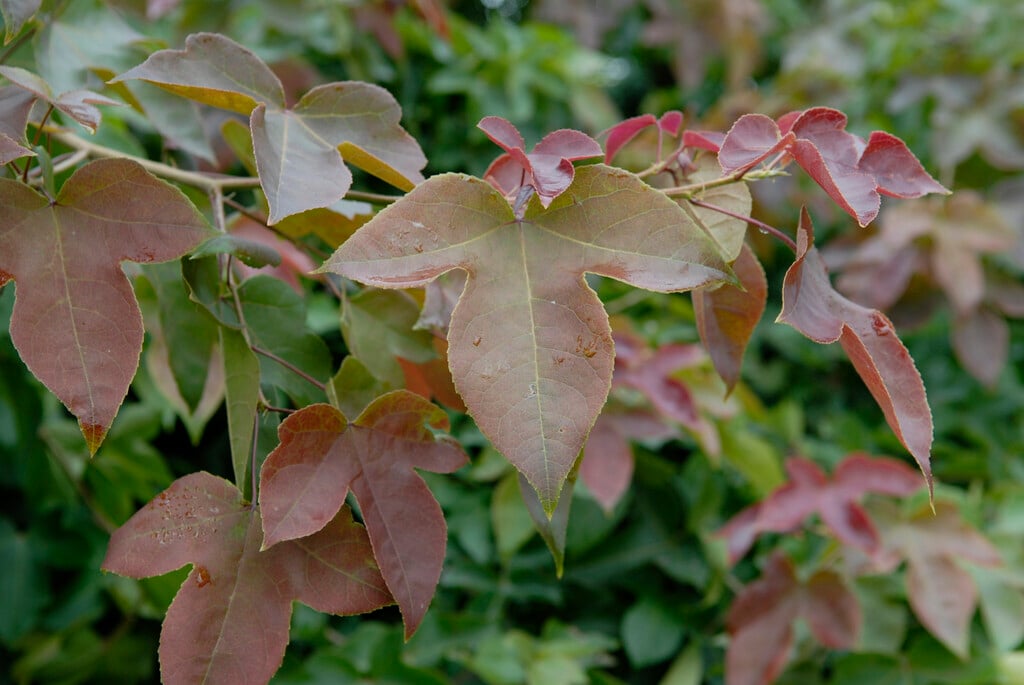Liquidambar formosana
Formosan gum
A deciduous tree to about 15m tall, broadly conical in outline. The 3-lobed leaves, turn to shades of red, orange and purple in autumn. Insignificant flowers in late spring are followed by spiky fruit capsules in autumn, which can remain on the tree into winter. Less hardy than other Liquidambars, requires a sheltered spot.

Buy this plant
Size
Ultimate height
Higher than 12 metresTime to ultimate height
20–50 yearsUltimate spread
Wider than 8 metresGrowing conditions
Moisture
Moist but well–drained, Well–drainedpH
Acid, NeutralColour & scent
| Stem | Flower | Foliage | Fruit | |
| Spring | Green | |||
|---|---|---|---|---|
| Summer | Green | |||
| Autumn | Red Orange Purple | Green Brown | ||
| Winter |
Position
- Full sun
- Partial shade
Aspect
South–facing or West–facing or East–facing
Exposure
Sheltered Hardiness
H5Botanical details
- Family
- Hamamelidaceae
- Native to GB / Ireland
- No
- Foliage
- Deciduous
- Habit
- Spreading branched
- Genus
Liquidambar are deciduous trees grown for their alternate, maple-like leaves which take on brilliant and long-lasting autumn colour; flowers and fruits are inconspicuous
- Name status
Correct
- Plant range
- E Asia
How to grow
Cultivation
Grow in lime-free, moderately fertile soil, in full sun or partial shade. Suitable for woodlands or as a specimen tree. Full sun brings out the best autumn colour. See tree cultivation for further advice
Propagation
Propagate by semi-hardwood cuttings
Suggested planting locations and garden types
- Architectural
- Low Maintenance
Pruning
Pests
Generally pest-free
Diseases
May be susceptible to honey fungus
Get involved
The Royal Horticultural Society is the UK’s leading gardening charity. We aim to enrich everyone’s life through plants, and make the UK a greener and more beautiful place.